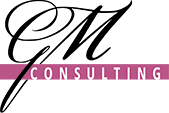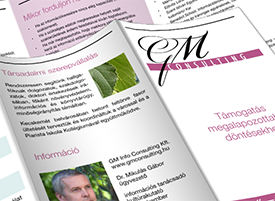Railway documentation centre – An emerging asset
Presented on the conference “International Union of Railways (UIC) Documentation group” Budapest, 17th June, 2004.
There are significant changes in the knowledge value-chain of the companies from the aspect of information and documentation services. The internal circumstances are the trend of liberalisation and the probable concentration in the sector, the new competitors in information and knowledge services, and the outsourcing as possibility.
These make the information and documentation services to seriously think about their future role within the company. The main points of this presentation will be:
- Increasing pressure on company documentation centres
- Possible scenarios of the company
- Marketing strategies of the information and documentation centre.
1. Increasing pressure on company documentation centres
One of the major threat is the information and knowledge scissors. This means that expenses are raising for acquiring information – consultancies, current awareness, intelligence services etc. on the one side and importance of local documentation centres is decreasing on the other side. It also means an ignorance of the internal knowledge assets and the synergic value among the groups.
Several large (earlier state owned) companies have traditionally has libraries or information and documentation centres. These departments are often frightened by downsizing or closing. Traditionally they are in the bottom of the company’s hierarchy. It seems that they could not offer their services on the mainstream on the information flow. Some of them were never really there: their maintenance was part of the company’s social function to its workers.
There are numerous internal and external competitors. The internal information lobbies may catch the current awareness, the intelligence, the information brokerage function, the archive and DMS (document management system), the intranet or the club. These functions may all belong basically to an information and documentation centre.
Let’s see the portfolio of an information and documentation centre. It involves trained librarian or documentarist professionals, has rooms, magazines, a collection of documents, books and periodicals, contacts with document suppliers and database vendors. It offers information service to the company. But collecting and providing documentation and information in itself has no value due to the information overload. The pure information became valueless or has even negative value. The decision maker becomes frightened in case she or he should offer additional time to turn information into a more complex, tailored entity – called knowledge – while she or he enters the information and documentation centre. These people want to get the information precisely tailored in the right time, in the right form. They are also frustrated when they get more in quantity than they needed for the decision. The optimal way is to serve precisely tailored information on demand (=knowledge segment) to decision makers. To spare time and trouble for the clients instead to asking it for these.
The development of precisely tailored information packages requires the knowledge of the user’s demand. This demand should be derived from the goals of the company, practically of its strategic aims, which is basically to ay be satisfy users through the quality of its transportation service, due to maximize revenue. All of the assets of the company are collected for this purpose.
The total assets of the company are made us of by the sum of book value (tangible, financial assets) and the intangible assets. The intangible assets consists of human capital (knowledge), structural capital (know-how) and external capital (customers and partners). The information functions of the company may increase all of the three intangible capitals but mostly human and structural capitals.
|
Type of intangible assets
|
Possible contribution of i&d centre (e. g.)
|
| 1. human capital (knowledge) | sharing knowledge, intelligence |
| 2. structural capital (know-how) | collecting benchmark-data |
| 3. external capital (customers and partners) | developing external knowledge map |
The wider activity of information and documentation centres should include for example the support of learning (company learning and individuals’ learning). As the information pyramid also demonstrates, a repositioning of the services of railway documentation centres is required, which means a shift from document and information management to knowledge management. This positioning does not mean the ignorance of documents and information: rather it means to use them as the contributors to knowledge management activities. The knowledge management aims to identify, map, and share the information for the process of creating knowledge. The critical success factor of documentation and information centre is whether they are able to fulfil this task, to be the key regulator of the knowledge value chain.
2. Possible scenarios of the company
The railway documentation centres have to face the following scenarios (this is true also to several other big company libraries, information and documentation centres in Hungary):
- closing the documentation centre, as an unnecessary cost centre,
- outsourcing the info & documentation centre,
- an autonomous profit centre inside the organisation,
- maintaining rigid structure with declining budget.
The first possibility does not seem to be convenient because the loss of internal knowledge (human capital), the professional network (external capital) and documents (tangible capital). The same structure with declining resources also results in the closing down in longer distance. That is why I only concentrate on 2nd and 3rd possibility, the outsourcing or the enhanced autonomy within the organisation.
A typical threat is that the different information and knowledge service entities are fragmented inside the organization, like intelligence service, archive, library, knowledge management. Without their day-to-day interactions and synergy expensive parallel services are maintained within the organization. But it should not be necessary. The following table lists the advantages of the both scenario.
|
Pros of outsourcing info & documentation centre
|
Pros of autonomous profit centre inside the organisation
|
| – Greater access to wide scope of external knowledge, – Cost efficiency (individual com-missions), – Releases internal work capacity, – Quicker (=cheaper) service, – Their critical success factor is professionalism, – Greater independence |
– Has local knowledge of demands and culture, – Expenditures are easier to calculate, – Available locally, better control, – Greater reliance, confidentiality, – Greater loyalty, – May generate income with offering services to external users |
Due to the important pros on both sides, a mix is to be created to establish a vital information and knowledge network. A network is necessary, since the information and documentation centre is not able to meet all the information and knowledge requirements of a railway company. These requirements may be e. g. the following:
- For the headquarter (planning, decision making): proactive information service on both national and EU-level legislation, competitive intelligence, monitoring logistic surveys given out by national authorities, bodies and international firms
- For the marketing department: general current awareness, issue management, benchmark information, user surveys
- For the PR-department issue management, collecting internal and external documents for PR-projects
- For the purchasing department: company and product / service information, bank information, checking references etc.
- For the controlling: benchmark data in- and outside the sector
- For the service development: benchmark data, purchasing documents, current awareness of scientific databases
- For HR-department: identifying key knowledge outside the company, HR-benchmark, partner of knowledge management projects (knowledge mapping, facilitating the internal knowledge-sharing processes etc.)
- Financial department: bank information about business partners, accountability information
- For quality management benchmark and best practice information
- Content provider of company web portal and the intranet
- Maintenance of DMS system
- For the external users: information about the railway company and its sector
Due to the limited resources and its competitors, the information and documentation centre may not cover all the listed fields, rather, it may choose to be highly effective in some of them and maintain strong connections with the other information service providers. In this case, it can offer more complex and tailored knowledge service for its users.
The input of services may alter partly. The most current knowledge may be found mostly in the heads of people. To “dig it out” may the documentarist may use telephone. The use of e-mail and electronic sources may still increase. The proportion of the use of printed documents is likely to decline. Intelligent browsers, data and textmining solutions may appear as a new armature. They may collect factual data directly for decision making – intelligence – from huge amount of textual data available on the internet or in the internal document store or even in users’ responses (sms, e-mail, voice mail etc.).
3. Marketing strategies of information and documentation centres
Marketing can only be effective in case the information and knowledge production is fit to its users. In this case the following activities may be most important:
- Proactivity; developing services for decision makers before the demand arises for it (aim is to develop an attractive image: the information and documentation centre is a vital service department)
- Increasing cost consciousness with internal charging system aiming to indicate that the knowledge is an asset (aim is to point out that knowledge is a capital, a value, which needs investment in the interest of the company)
- Cooperation with internal and external information and knowledge suppliers to enhance the value and accuracy of the service (aim: to offer more comprehensive service)
- Services for external users for learning and testing information environment and generate income (participate in the provision with information as a PR-activity of the company).
The critical success factor within this develpoment are:
- the rapidity and the ability to absorb and process information and to turn it into knowledge on service development
- knowledge and good practice of management
- efficient internal communication.
The biggest internal obstacle may be: slowness of culture-change (from power or role culture into task or person culture) and the lack of learning attitude.
The ability to develop strengths (look at “S” of SWOT analysis) may change the attitudes of decision makers of railway company managers. They would probably not withdraw or weaken a service on which they are depending.






